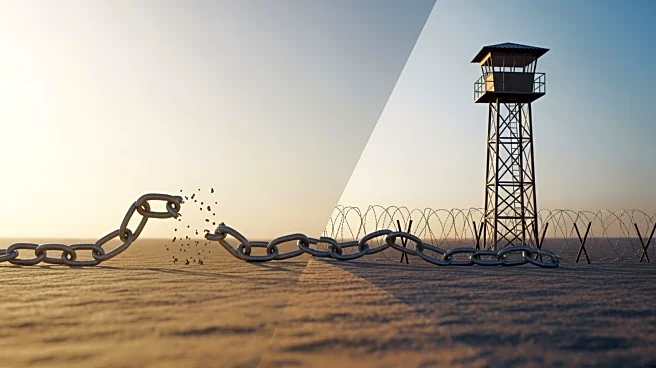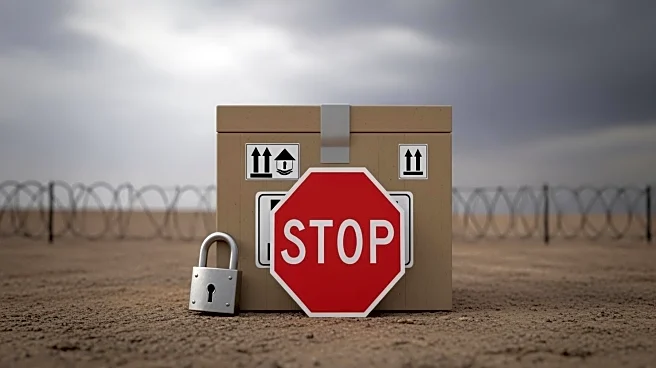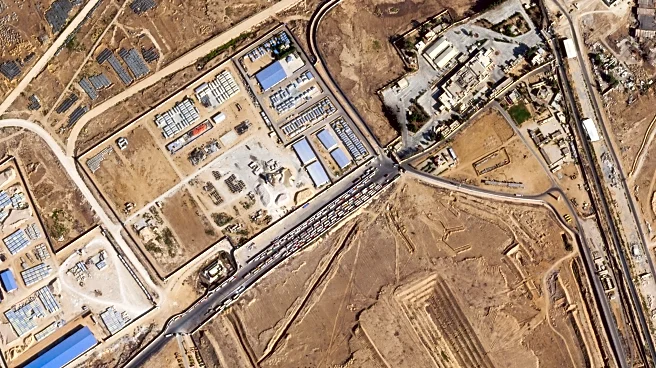What's Happening?
Gaza is currently divided between Hamas-controlled western regions and Israeli-controlled eastern areas, marked by the 'yellow line' ceasefire zone. This division has created a fragile balance, raising
questions about the future governance of Gaza. Displaced Palestinians are living in tents near destroyed buildings, unable to return to their homes due to ongoing tensions. The ceasefire agreement aims to stabilize the region, but the division of control between Hamas and Israel complicates the situation, with potential risks of further conflict if the agreement is not upheld.
Why It's Important?
The division of Gaza into separate territories controlled by Hamas and Israel has significant implications for the region's stability and governance. The fragile balance created by the ceasefire zone could lead to further conflict if either side fails to adhere to the agreement. The situation affects the lives of displaced Palestinians, who face uncertainty and hardship. The international community's efforts to mediate peace may be challenged by the complexities of the divided control, potentially impacting regional stability and international relations.
What's Next?
The future of Gaza's governance remains uncertain as the ceasefire agreement is tested by ongoing tensions. The international community may need to increase diplomatic efforts to ensure compliance with the agreement and prevent further conflict. The division of control could lead to shifts in power dynamics, affecting the region's political landscape. The humanitarian needs of displaced Palestinians may require increased attention and support from international organizations.
Beyond the Headlines
The division of Gaza raises ethical and humanitarian concerns, particularly regarding the treatment of displaced Palestinians. The ongoing conflict and division of control could lead to long-term implications for the region's stability and governance. The international community may need to address the humanitarian needs of the population while balancing political and military strategies. The situation highlights the complexities of achieving peace in a region with deep-seated historical and political tensions.












